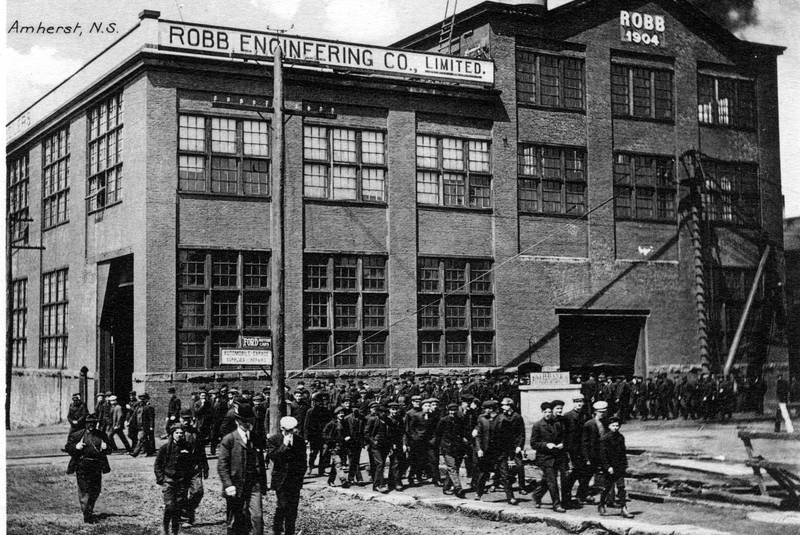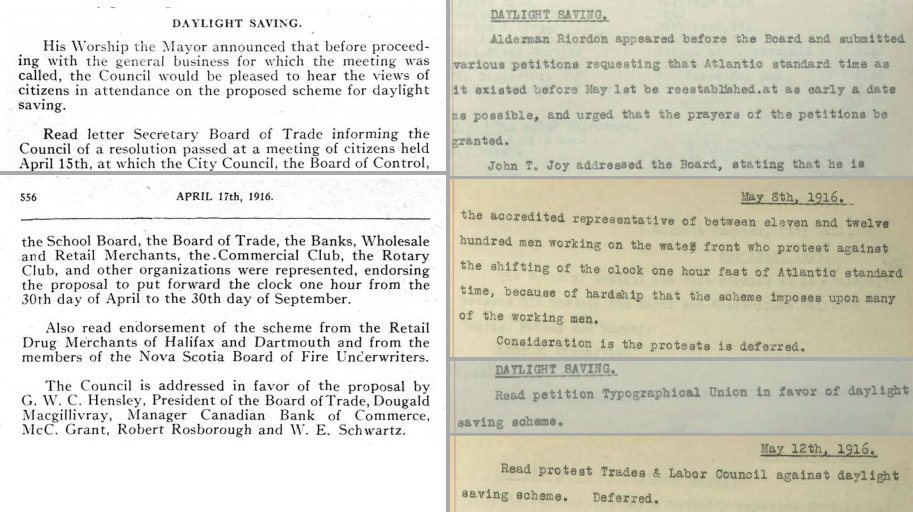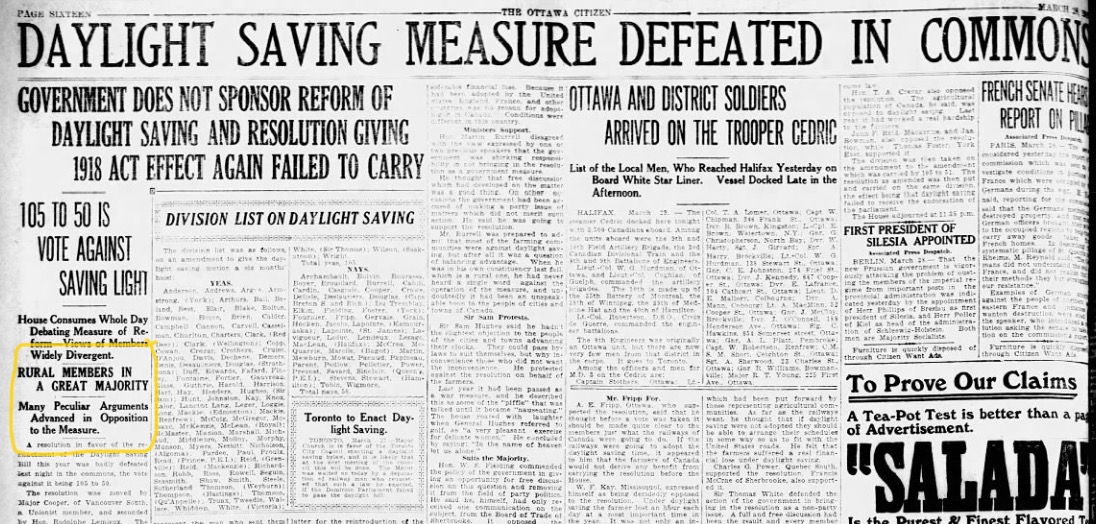Fighting the Clock in the Amherst General Strike of 1919
on

One hundred years ago today, on 19 May 1919, one-third of the population of the town of Amherst, Nova Scotia — women and men alike — launched a three-week general strike. The primary demand of the strikers was to shorten the work day from ten hours to nine. But among the targets of their anger was the “capitalist plot” of daylight saving time (DST).
The small maritime industrial town boomed up until the end of the First World War, producing rail and defense equipment. But a decade of deindustrialization decimated the jobs in the town as factory owners moved westward into the increasingly centralized Canadian economy. As soldiers returned home from the war, jobs were scarce; mass industrial actions and news of the Bolshevik revolution were both on the rise; and the town of Winnipeg, Manitoba had launched a general strike only days before.
Chief among the strikers’ demands was to shorten the work day from ten hours to nine, at the same weekly pay. For these strikers, the bosses’ control over their time — in the length of the work day — fused with the government’s control over their time — with the official observance of DST. It was only natural, then, for their anger to spread to the latter.
Canada followed the US into nationwide DST in 1918, causing mass anger from farmers in rural areas of Canada and many blue collar workers in the towns and cities; it was the same in the US. For these workers it meant waking up at an unnatural solar time, before the society around them begins the rhythms of the day. They’re the ones who already had to wake up before everyone else, after all. Notably, however, it was far from consensus for all but the farmers.

The next year, with the war and ostensible justification for DST at an end, Ottawa decided to leave the DST issue to individual cities to mandate, as did the US, not wanting to risk more popular anger. Now with DST being decided by the individual cities, it became a hotly debated issue across Canada in the spring: will our town change the clocks again?
Virtually every newspaper published editorials and commentary about DST, as they did in 1916 when the idea first achieved national recognition by some countries during the war.

As the working class anger over time grew in Amherst, the newly organized Amherst Federation of Labor made sure to squash DST in their town. At one town discussion about DST before the strike erupted,
300 Amherst Federation of Labor members marched to the public meeting and “hooted down” daylight saving proponents. [One union leader] charged angrily that daylight saving was a capitalist plot to lengthen the working day. 1
The town was subsequently not one of the many Canadian municipalities to observe DST in 1919.
After a weeks-long strike by a sizable portion of the working men and women in the town, most employers conceded the nine hour day, if not also the ten hour pay. The Amherst workers won a twofold victory over the control of their time.
In the hundred years since, all of North America has adopted nationwide daylight saving time policies. Moreover, large swathes of North America have experienced more deindustrialization as production moves not to inland Canada but around the globe. One wonders whether new demands for shorter work days will spring up again in North America — and whether those demands will be linked explicitly to daylight saving time.